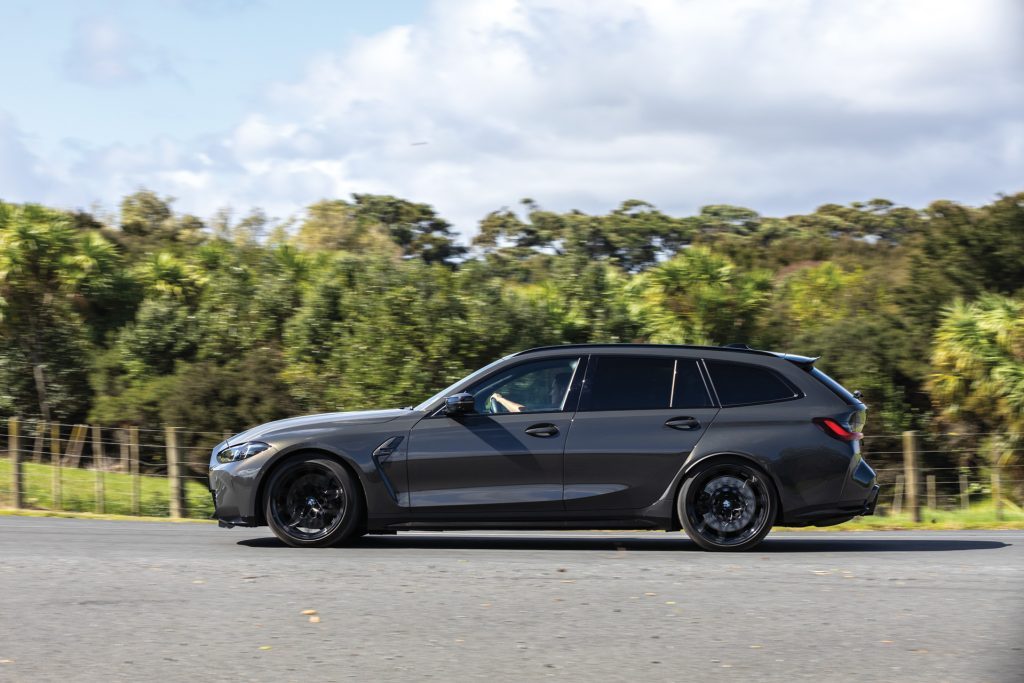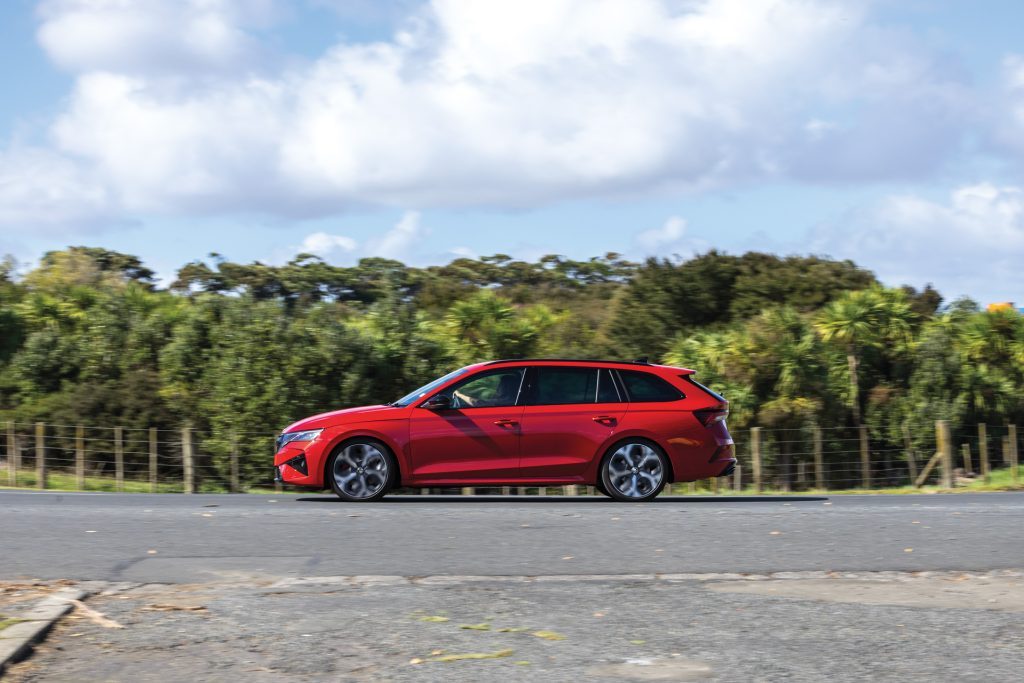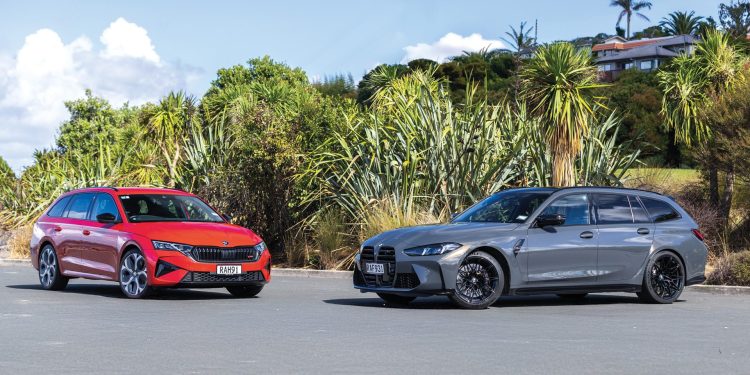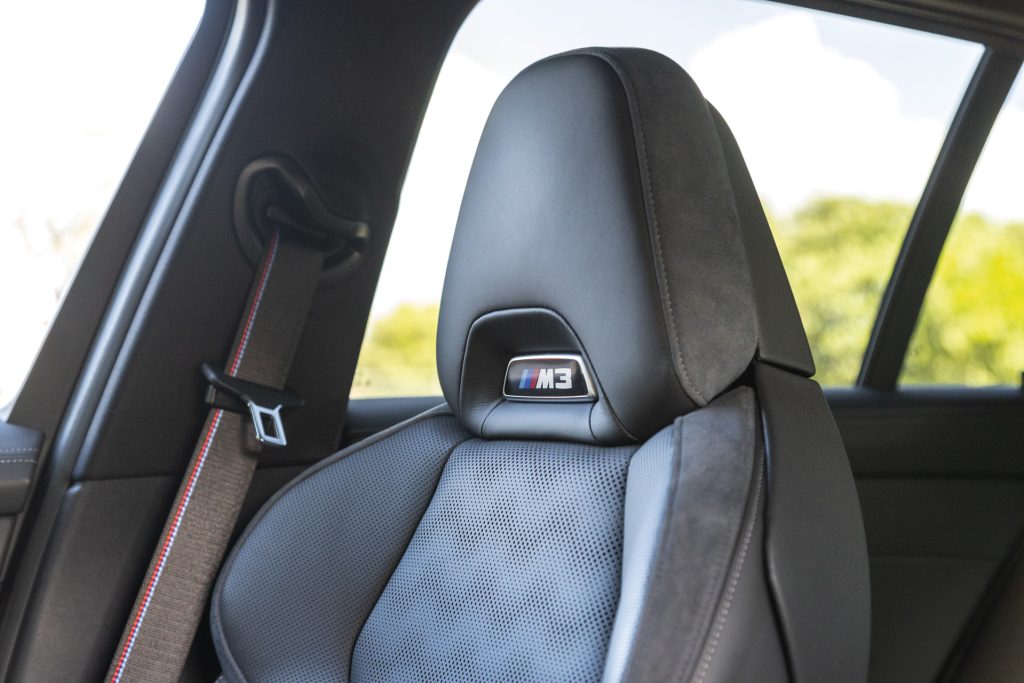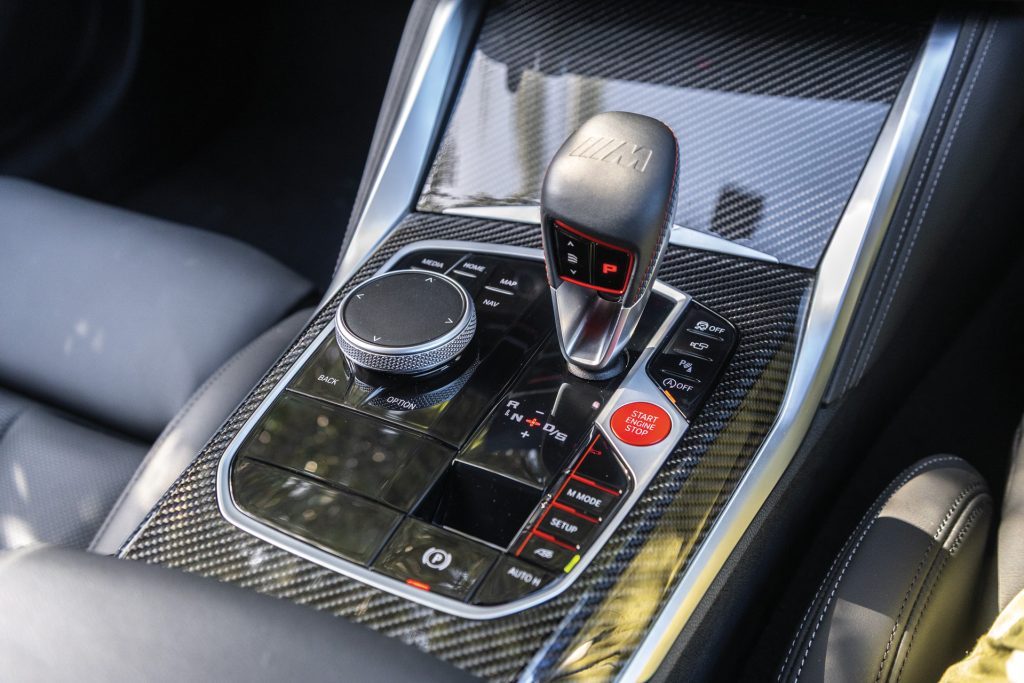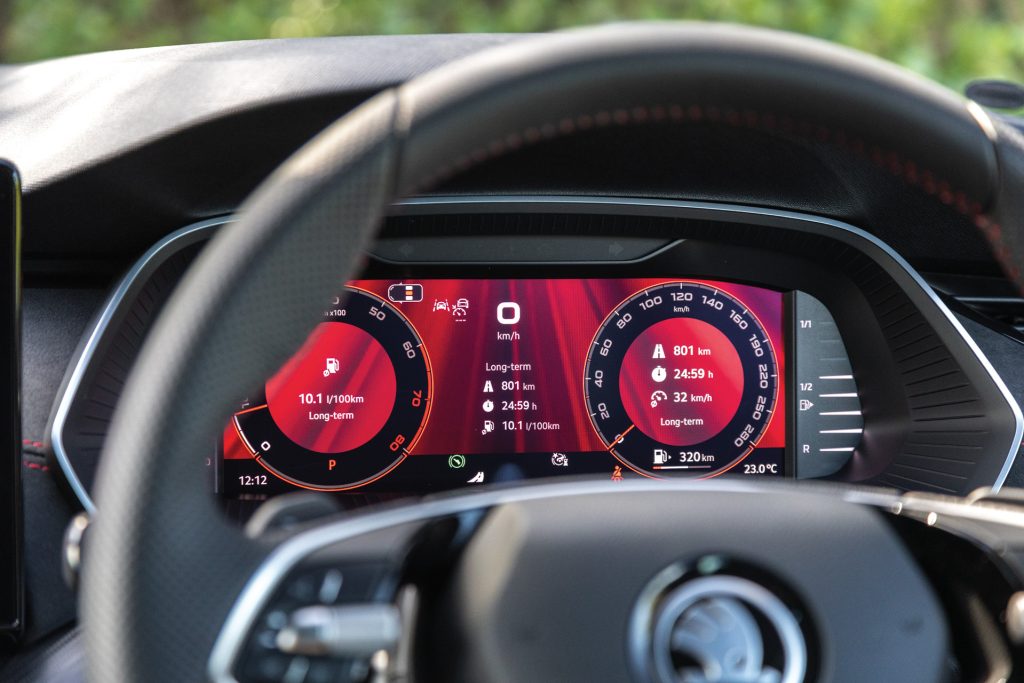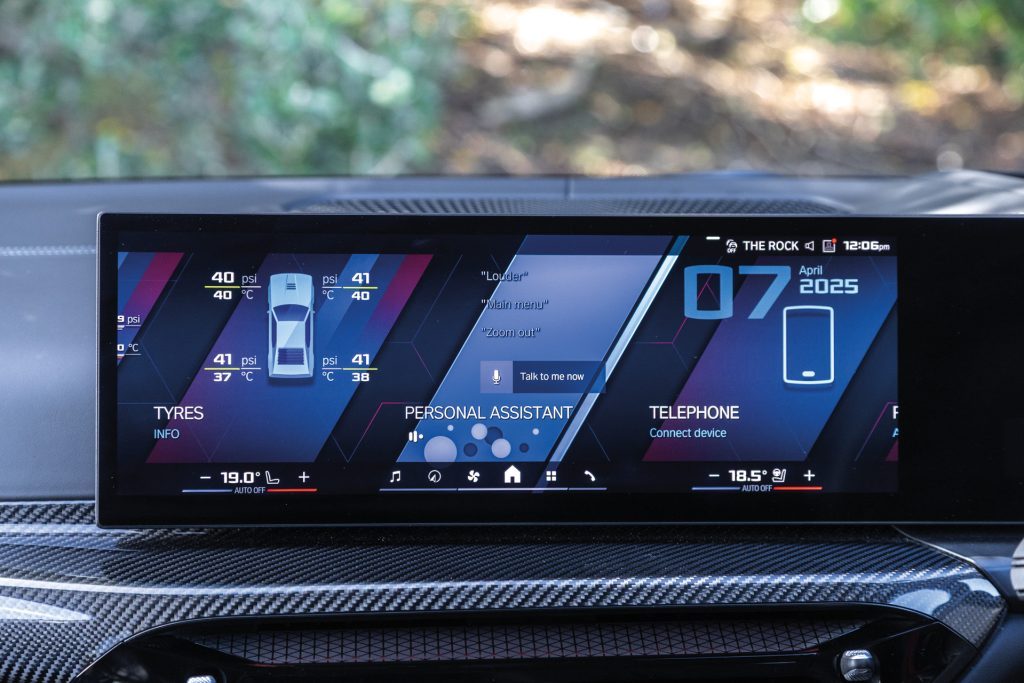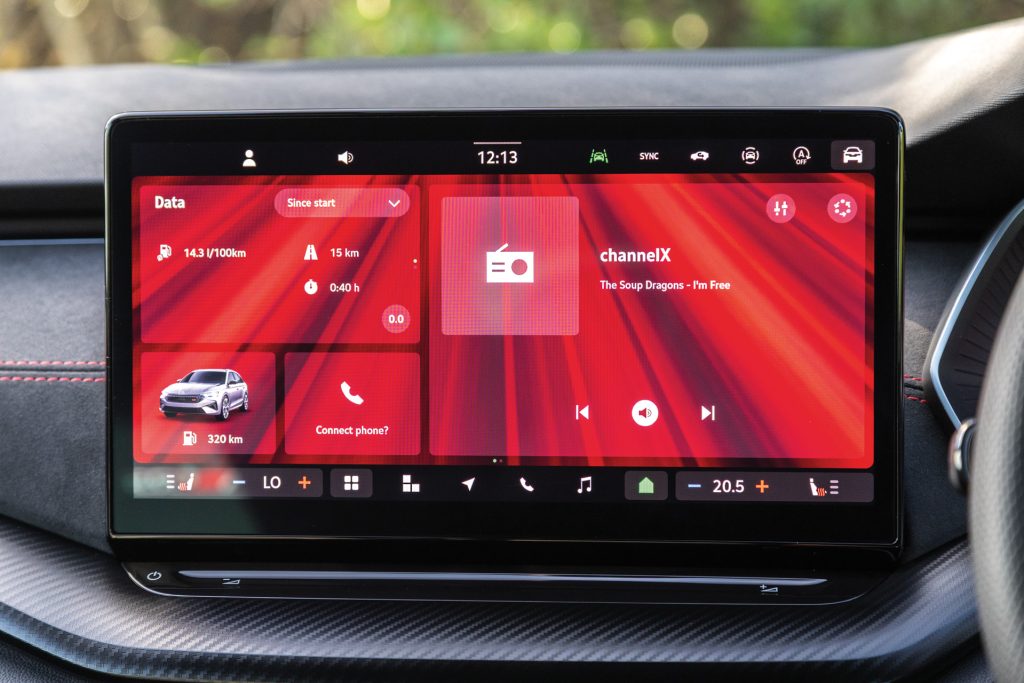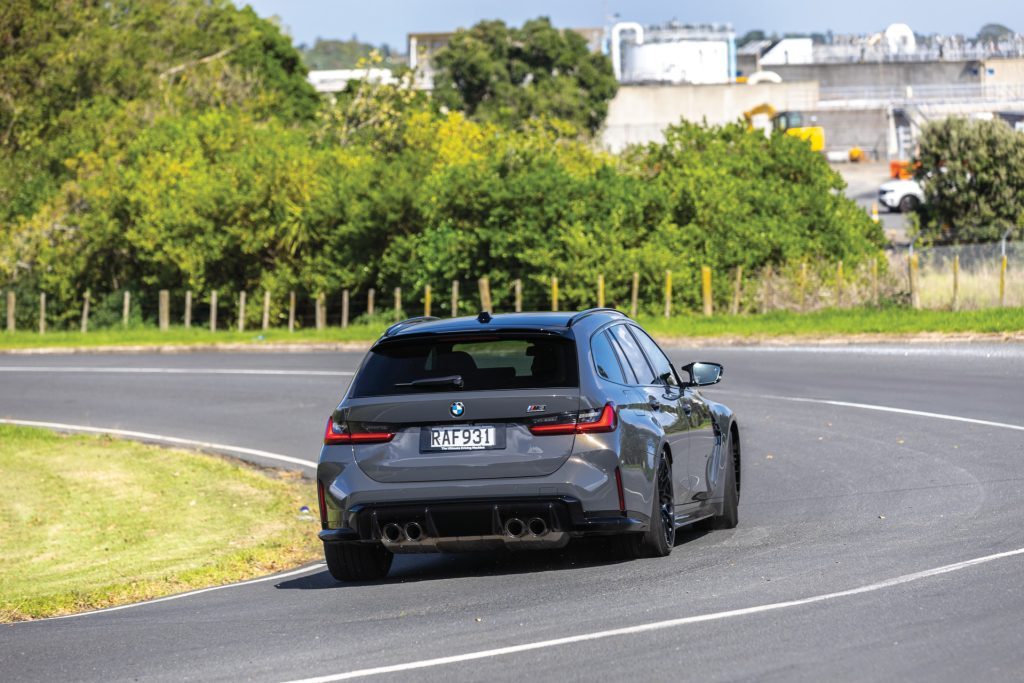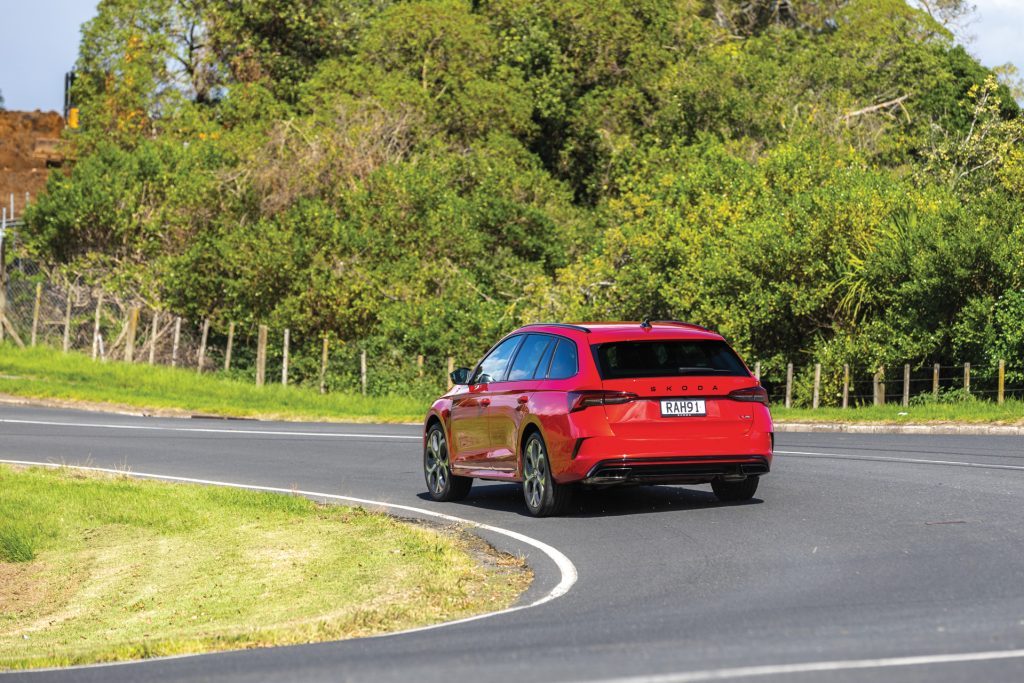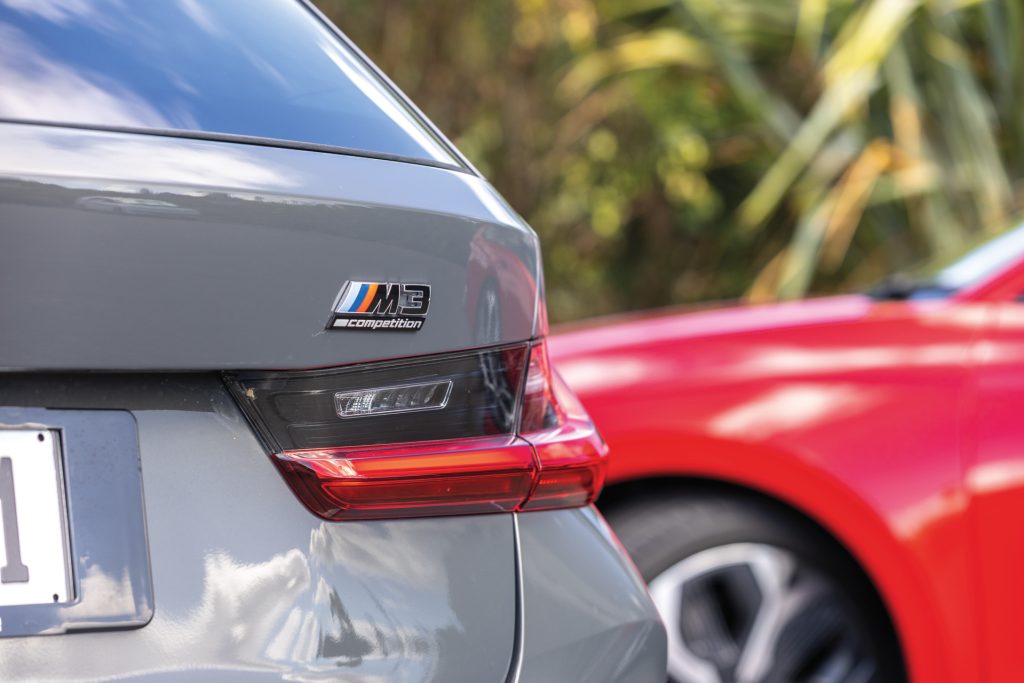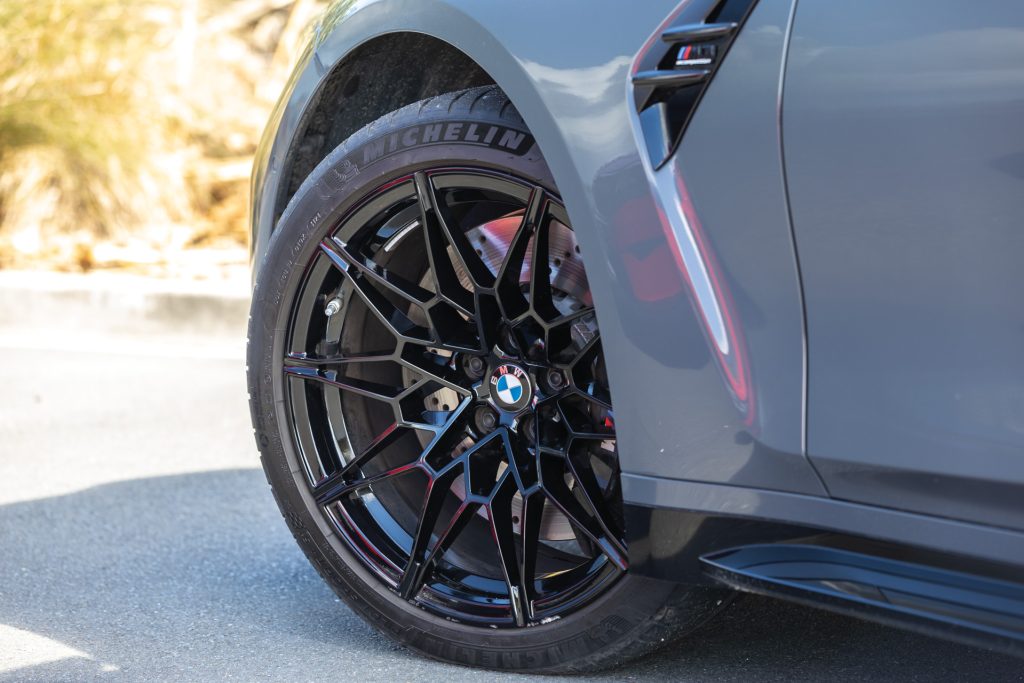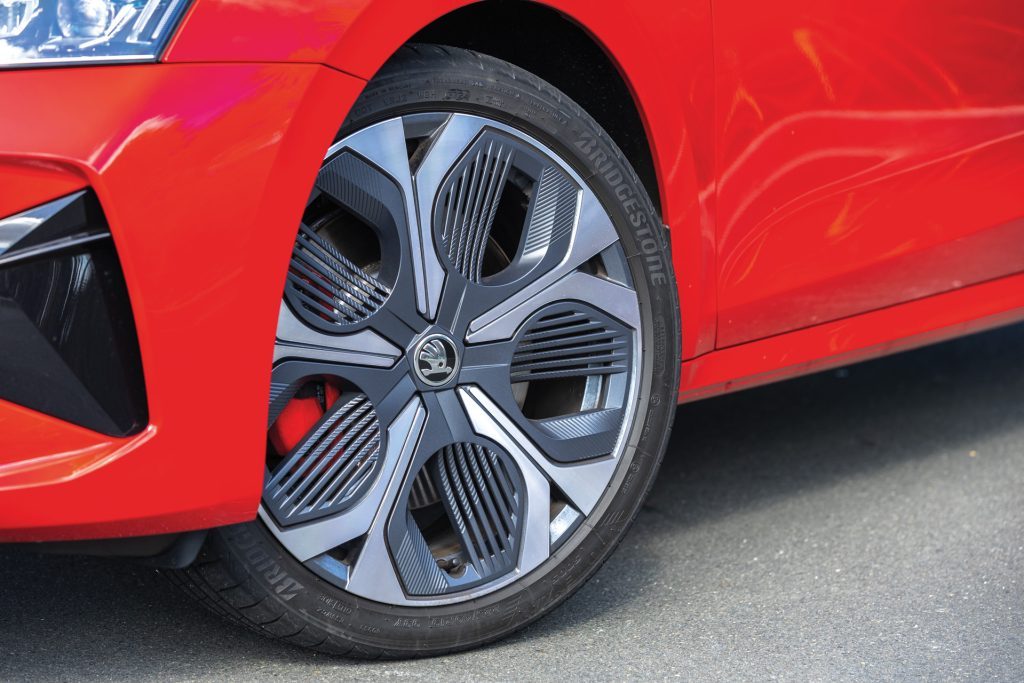2025 BMW M3 Competition Touring vs Skoda Octavia RS+ TSi Comparison
Words: Kyle Cassidy | Photos: Alex Schultz
The BMW M3 Touring Competition is brimming with power and potential but comes with a big price tag. Can something asking much less, like the Skoda Octavia RS, do much the same job?
The performance wagon is an enthusiast’s favourite, especially for those with more than just themselves to think about. It is practical, family friendly even, yet when the driver finds themselves alone, it delivers substantial fun.
Unfortunately there aren’t many options and most are reserved for the upper reaches of the premium Euro market. An example is the BMW M3 Touring. It’s the first time the M3 has been served up with a bigger boot and this M3 is BMW’s RS 4 foil. A pity that the Audi is between drinks; we drove the last of the current generation last year, so a direct comparison seemed pointless. Instead we ask: do you really need to spend six figures to get your fast wagon fix? Can something costing significantly less satisfy the urge? Such a machine does exist, and it’s just been revised too. We are talking about the Skoda Octavia RS.
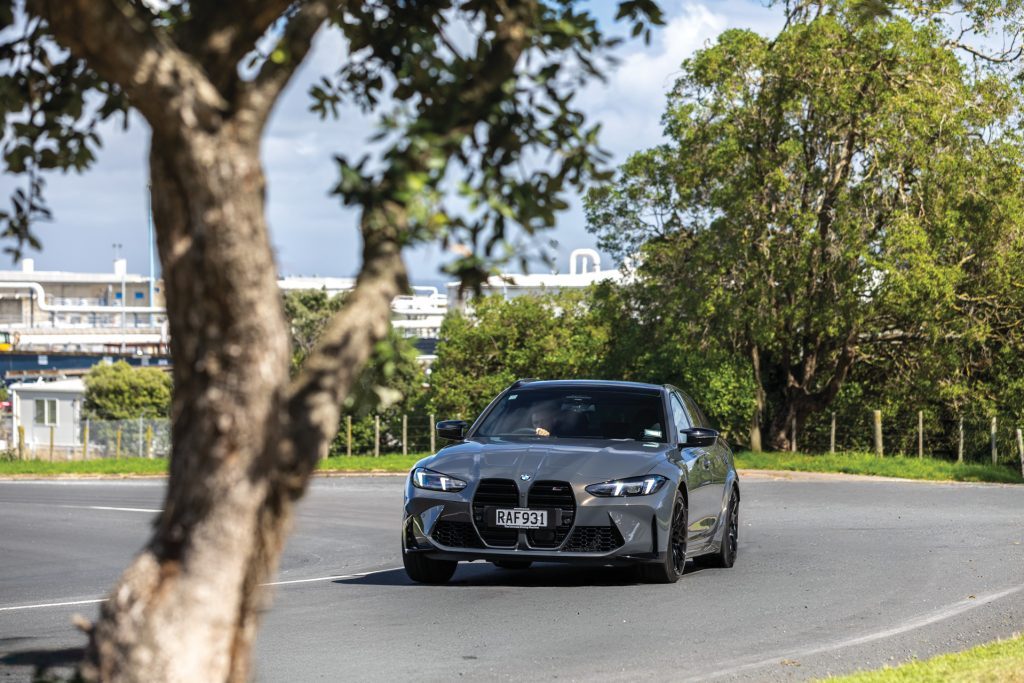
The M3 Touring Competition
We’ve had coupe, sedan and convertible M3s in times past, and finally now the Touring. You might be used to the angry beaver look of the latest M3 up front, but it’s still ungainly. However, the look improves aft of the grille. The Touring is pumped out, its sculpted wheel arches encasing a wider track. The extended side skirts fill in the gaps, bridging the exaggerated front and rear aprons. You’ll also notice the XL exhaust tips and the wee Gurney flap on the roof spoiler. Its multi-spoke alloys look menacing though are a nightmare to clean (a good punishment for naughty children).

Under the hood lies a serious rendition of the 3.0-litre straight six. This has a pair of monoscroll turbochargers and creates 390kW, helped by 650Nm of torque. Teamed with all-wheel drive and a quick-shifting eight-speed auto, the Touring can supposedly hit 100 in 3.6 seconds. Typical of the M breed, there is a raft of set-up options; the transmission, suspension, steering, brakes and stability control can all be tailored, most through three levels of intent. And you can save your preferred combo to one of the two M buttons on the steering wheel, for quick access.
The M3 gets a good stiffening with extra bracing and struts, and tauter suspension settings teamed with adaptive dampers. The all-wheel drive is variable in nature and blessed with a rearward bias. There’s also an M differential out back to further enhance that rear-drive feeling. You can select 4WD Sport, which serves up even more drive to the rear, or switch off the DSC completely and then you’re in 2WD. Then you can tune the M Traction Control to your liking, through 10 stages of intervention. Along with an onboard lap timer, there’s the Drift Analyser to record the duration, angle and distance of your skids. All this fun does not come cheap, however, with a base price of $199,600.
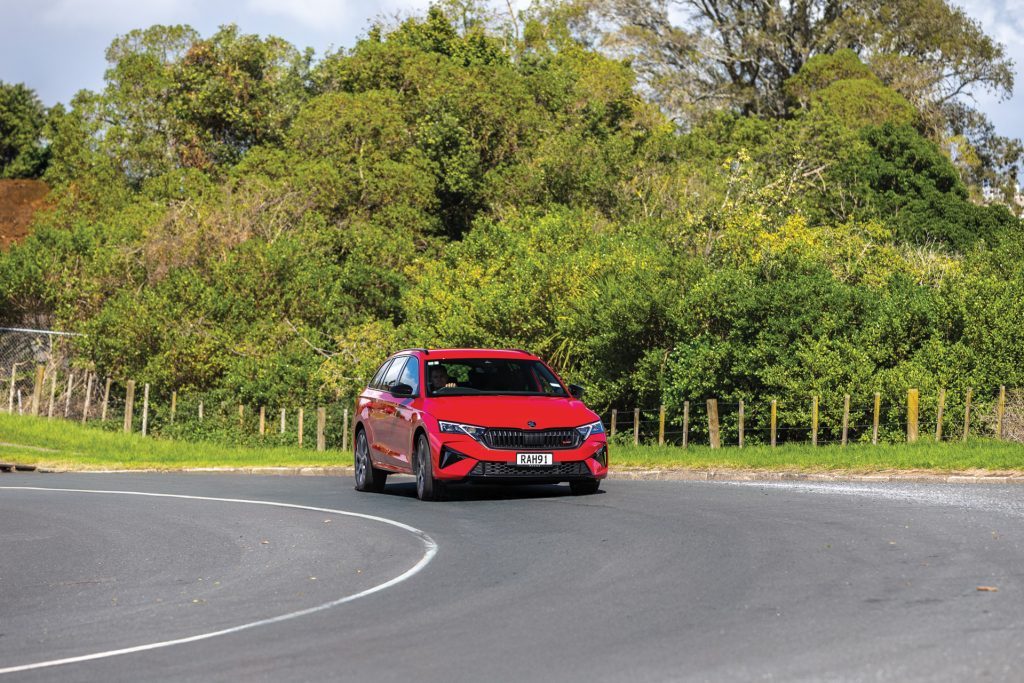
The Octavia RS
The Skoda doesn’t have quite the firepower or such a long hardware list but it doesn’t ask nearly as much either. The new model starts at $67,990, while the Plus variant is an extra $5k for upgraded seats trimmed in leather and better sounds.

The engine department has had an update, the 2.0 TSI making 195kW here, with 370Nm chiming in as well. The RS runs with a seven-speed twin-clutch transmisison, sending the torque to the front wheels alone. Helping ground that output is the electro-hydraulic diff lock. This tempers torque steer and minimises spinning wheels when powering out of bends. With both a power and traction deficit, it can’t hope to hold a candle to the hard charging M3, with a stated 0-100km/h time of 6.5sec, if you can get it to stick properly. Helping balance comfort and dynamics are adaptive dampers. Ride in the RS is set 15mm lower than in the cooking version. The revised Otavia also gets a style update with new front and rear bumpers (new diffuser and tailpipes at the back too) and blackened bits. It sits on 19-inch, aero-optimised alloys. Sure, it doesn’t sound quite as exciting, but you could have two of these and still go on a lavish holiday for the price of the BMW.
Both driver’s cars
The RS can decode demon roads well. Switched into Sport mode, it dives into the action, and holds a line sternly through the bends. It does feel a tad digital however as the torque vectoring function is working to keep things tidy. With ‘ESC Sport’ engaged, this lessens the intervention of the stability commendants, the front-end unshackled and it’s your right foot that manages the show. The RS can take corners at a decent clip, the wheels scrambling to lay the power down as you give it just the right amount of jandal, wary to keep the front from pushing too wide. Through the tighter, twistier sections, it is genuinely engaging, grin inducing. The brakes are decent too with good bite but also a delicate pedal so you don’t upset the balance with errant weight transfers. Its steering is quick, while also advising on how hard those tyres are working.
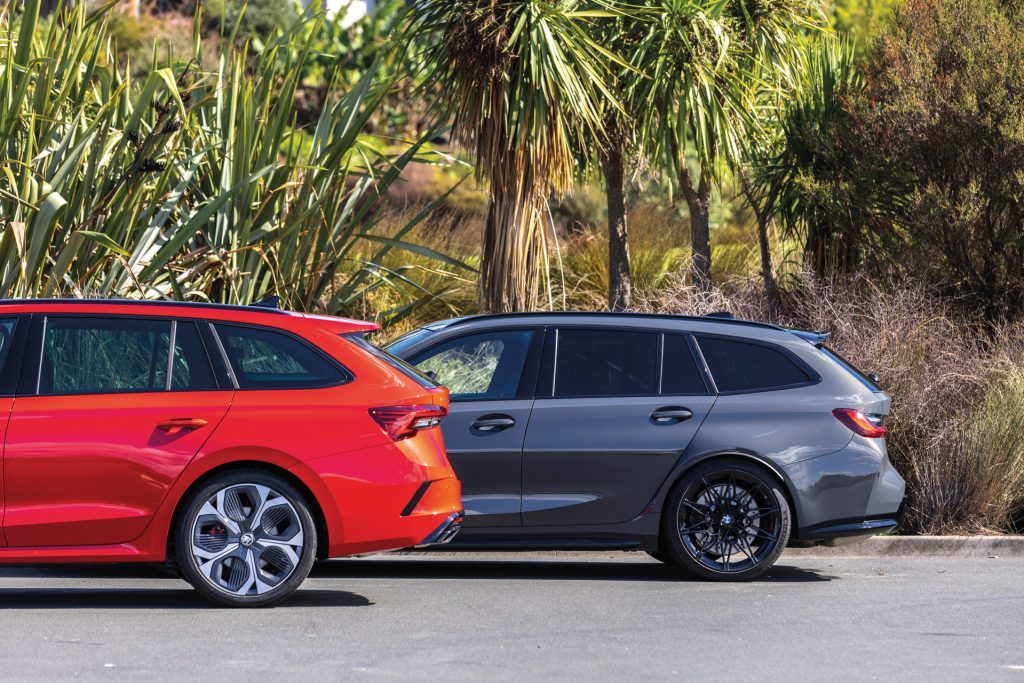
The twin-clutch is up and down the cogs quickly and smartly, the paddles there for show really. Its 2.0-litre pulls nicely from 3000rpm at speed, but it’s no screamer, being well done by 6500rpm. There’s a bit of a rorty note to its delivery but the tyre roar can challenge it at 100km/h on coarse chip.
BMW’s M3 Touring can charge through the bends in an even more furious manner, but is it a case of being too much of a good thing? It’s seriously rapid, much of its talent going untapped without getting unhinged on road. But, when you do get the chance, this is a blazingly quick and talented machine. It has an outright grip advantage with wider tyres at each corner. Sure, it is heavier but with a balanced weight split, it turns in sharply. The helm isn’t brimming with feedback but you know it will just stick.
With its variable AWD and the M diff working together, you can feed the power in mid-bend and it claws its way around without a hint of pushing wide. And then you can be on the gas hard before the exit. With its rear bias, this helps it tighten the line, making it feel very neutral. And easy.
The ride in Sport plus is intolerable, Sport better but still bumpy. The in-between setting for the trans is not quite sporty enough in terms of well timed downshifts while full attack mode is way too racy. So it can be better to paddle it along on the road. There’s nothing much wrong with the response of the turbocharged engine. It really comes alive from 3000rpm and it revs quickly to just past 7000rpm, sounding distinctive and powerful through the range. The brakes are almighty, with a strong initial bite yet a tactile feel.
Cruise okay too?
The M3 Touring is an impressive performer, though a bit OTT for your drive to the beach house. Road noise can be intrusive and suspension vibrations are amplified here compared with in the Skoda. The Czech is also that bit easier on fuel reserves. It’ll average around the 10L/100km mark for a mix of city and motorway miles, whereas the BMW is in the 15s. When drinking heavily, the Octavia got into the 13s, the M3 saw close to 20.
The character of the M3 Competition will sit well with those that owned a modified JDM rocket in their youth. The suspension set-up sees the tyres chattering during u-turns, the diff gets a bit grumpy when cold and the brakes squeak. It sits low, the splitters and lower skirts look quite vulnerable, while the big alloys had already met the curb a few times before we had our time with it.
The Skoda is preferable as a commuter. Its ride is sumptuous compared with the harsher BMW. And the M3 generates a fair amount of tyre roar even at 50km/h. Neither suffers from any real turbolag at town speeds, the BMW with a heap of low down torque, the Skoda brisk too. Each has quick and light steering, the turning circles about equal.
The Skoda doesn’t have quite the firepower or such a long hardware list but it doesn’t ask nearly as much either. You Could have two of these and still go on a lavish holiday for the price of the BMW.
The safety minders know their place, issuing precious few alerts, though the Skoda’s lane keeping is more insistent. BMW’s active cruise with its Assisted Drive feature is smarter too, virtually taking care of motorway cruising. There are more widgets in the infotainment realm, a better parking camera with a surround view, and more items on the spec sheet, as you would expect for the much greater ask. The Skoda has everything you really want though, the bigger 13-inch screen a bit easier to navigate than the old system. However, a few more buttons on the dash would be nice, while the voice help isn’t as proficient as the BMW’s.
Practical or what?
It’s a snug fit behind the wheel of the M3, the driving position set deep. The seats are firm, overly so, though have excellent adjustment and are ventilated too. The M3’s cockpit wears the sports luxury leather and carbon combo well. Skoda RS has a roomier driving position, the seats with more comfort about them yet they are no less effective in overall support.
The Skoda is your more practical performance wagon. It has a larger boot, with a wider, longer load area. The width of the BMW’s hold is limited by intrusive suspension towers. However the M3 is not impractical, still with 500L of space, and with a variable split folding seat back too. The opening glass hatch is a nice touch, a ‘heritage’ trait.
The Skoda is more accommodating of people in the rear seats. It’s tight in the back of the M3 Touring, the big sports seats up front robbing those behind of leg room, while three across is a genuine squeeze.
Would the Skoda do?
Most definitely. It’s a quick, fun-to-drive car that is also more practical and easier to live with. You get to enjoy all of its potential, the limits easier to access whereas with the M3 Touring, you’ll have to try a lot harder. Yet there will still be those with the means that will just want the M3 Touring Competition. It is a weapons-grade wagon but requires you to put up with its much harder edge.

BMW M3 Competition Touring
$199,600 / 10.4L/100km / 235g/km
0-100 km/h 3.6s
Ambient cabin noise 78.0dB@100km/h
Engine 2993cc / IL6 / T / DI
Max power 390kW@6250rpm
Max torque 650Nm@2750-5730rpm
Drivetrain 8-speed auto / AWD
Front suspension Mac strut / swaybar
Rear suspension Multilink / swaybar
Turning circle 12.6m (2.1 turns)
Front brakes Ventilated discs
Rear brakes Ventilated discs
Stability systems ABS, ESP, TV
Safety AEB, ACC, BSM, LDW, RCTA, ALK, AHB
Tyre size f-275/35R19 r-285/30R20
Wheelbase 2857mm
L/W/H 4801 / 1903 / 1446mm
Track f-1617mm r-1605mm
Fuel capacity 59L
Luggage capacity 500-1510L
Tow rating Not rated to tow
Service intervals Variable
Scheduled servicing 3yrs / unlimited km
Warranty 5yrs / 100,000km
ANCAP rating Not rated
Weight (claimed) 1865kg
Skoda Octavia RS+ TSI
$73,990 / 7.2L/100km / 166g/km
0-100 km/h 6.5s
Ambient cabin noise 72.9dB@100km/h
Engine 1984cc / IL4 / T / DI
Max power 195kW@5250-6500rpm
Max torque 370Nm1600-4500rpm
Drivetrain 7-speed twin-clutch / FWD
Front suspension Mac strut / swaybar
Rear suspension Multilink / swaybar
Turning circle 11.1m (2.2 turns)
Front brakes Ventilated discs
Rear brakes Discs
Stability systems ABS, ESP, TV
Safety AEB, ACC, BSM, LDW, RCTA, ALK, AHB
Tyre size f/r-225/40R19
Wheelbase 2681mm
L/W/H 4709 / 1829 / 1468mm
Track f-1543mm r-1534mm
Fuel capacity 51L
Luggage capacity 610-1700L
Tow rating 750kg (1600kg braked)
Service intervals 12 months / 15,000km
Service plan $1745, 3yrs / 45,000km
Warranty 5yrs / 150,000km
ANCAP rating ★★★★★ (2022)
Weight (claimed) 1563kg
